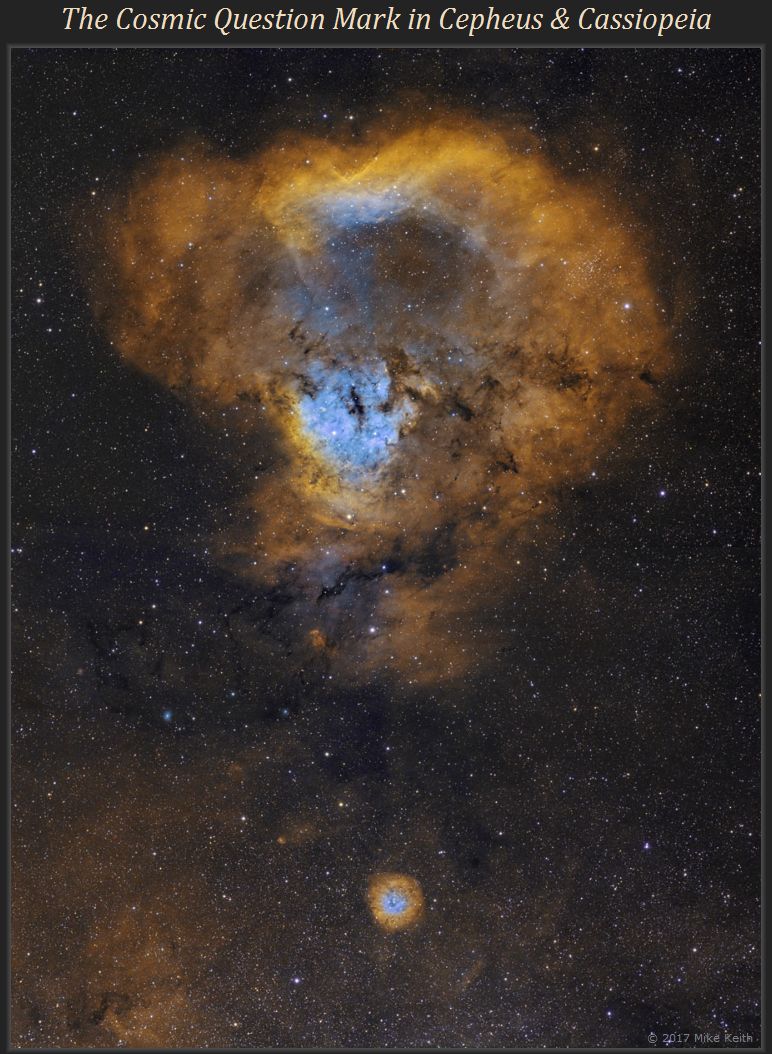
Click here for a higher-resolution image

Click here
for a higher-resolution image
This dramatic collection of deep-sky objects straddles the border between Cassiopeia and Cepheus (the upper half is in Cepheus) and is sometimes called The Cosmic Question Mark. The large upper section is NGC 7822; its bright blue core is designated as both Sharpless 171 and Cederblad 214. At bottom center Sharpless 170 provides the “dot” of the question mark.
There are a number of small objects scattered throughout the scene, which are labeled in the high-res version of the image (see link above). There are no less than four planetary nebulae (Sh1-118, WHI J0018+65, the nearly stellar PN G119.2+04.6, and Abell 1), two reflection nebulae (vdB 2 and LBN 585) and Herbig-Haro object HH 943A. At the far upper left is tiny galaxy PGC 136976, one of the relatively few galaxies visible through this dense part of the Milky Way. There are also two open clusters (labeled in the annotated image): NGC 7762 in front of the nebula at the upper right, and King 11 just outside the nebula in the same area. It is worth noting that this picture contains every major type of deep-sky object but one: emission nebula, reflection nebula, dark nebula, planetary nebula, galaxy, and open cluster - but no globular cluster.
This image was captured as a 4-panel mosaic using a Borg 60mm F/4 apo refractor and H,O,L,R,G,B filters, with a total exposure time of 55 hours.